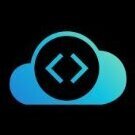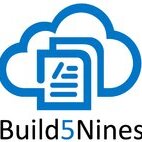Version Control & Collaboration
Git
GitHub
GitLab
Bitbucket
Code Review Practices
12 topics in this forum
-
Application Programming Interface (API) versioning is a common challenge for developers who want to maintain compatibility and stability for their users while also introducing new features and improvements. There are different approaches to API versioning, each with its own pros and cons. In this article, we will explore some of the best practices for API versioning in 2023 based on the latest trends and standards in the industry... View the full article
-
- 0 replies
- 267 views
-
-
Maintaining and contributing to open source projects can be rewarding—but it comes with a lot of small, repetitive tasks. The good news? GitHub Actions can automate the more tedious and error-prone parts of maintainership, freeing you up to focus on what matters: building and growing your community. Whether you’ve just launched your project or you’re looking to scale, here are a few of the most helpful actions to help you along your way... The GitHub Blog5 GitHub Actions every maintainer needs to knowWith these actions, you can keep your open source projects organized, minimize repetitive and manual tasks, and focus more on writing code.
-
- 0 replies
- 44 views
-
-
Imagine this: You’re sipping your morning coffee and scrolling through your emails, when you spot it—a vulnerability report for your open source project. It’s your first one. Panic sets in. What does this mean? Where do you even start? Many maintainers face this moment without a clear roadmap, but the good news is that handling vulnerability reports doesn’t have to be stressful. Below, we’ll show you that with the right tools and a step-by-step approach, you can tackle security issues efficiently and confidently... The GitHub BlogA maintainer's guide to vulnerability disclosure: GitHub...A step-by-step guide for open source maintainers on how to handle vulnerability repor…
-
- 0 replies
- 35 views
-
-
Exactly twenty years ago, on April 7, 2005, Linus Torvalds made the very first commit to a new version control system called Git. Torvalds famously wrote Git in just ten days after Linux kernel developers lost access to their proprietary tool, BitKeeper, due to licensing disagreements. In fact, in that first commit, he’d written enough of Git to use Git to make the commit! ... The GitHub BlogGit turns 20: A Q&A with Linus TorvaldsTo celebrate two decades of Git, we sat down with Linus Torvalds—the creator of Git and Linux—to discuss how it forever changed software development.
-
- 0 replies
- 57 views
-
-
-
The open source Git project just released Git 2.49 with features and bug fixes from over 89 contributors, 24 of them new. We last caught up with you on the latest in Git back when 2.48 was released. To celebrate this most recent release, here is GitHub’s look at some of the most interesting features and changes introduced since last time... The GitHub BlogHighlights from Git 2.49The open source Git project just released Git 2.49. Here is GitHub’s look at some of the most interesting features and changes introduced since last time.
-
- 0 replies
- 27 views
-
-
You may often be in a situation where you need to change a commit message in Git. You probably made a typo in your commit message or need to edit it to adequately capture the changes made in the commit. You may have also accidentally added sensitive data or just want to abide by your team’s policy by writing your Git commit message in a specific format. Whatever scenario you find yourself in, we will show you how you can modify Git commit messages... View the full article Want a quick intro to Git and how to set it up in your system? Check out this video:
-
- 0 replies
- 136 views
-
-
If it's your first time learning about Git branches, Google results can be a bit disappointing. All you get is that "branches are pointers to commits" and abstract stuff like that. So let's simplify. Let's read an easy-to-understand, beginner-friendly guide on Git branches. Branches explained in plain terms, and commands that show you exactly what you need to do. Here are the topics we'll discuss: What Is a Git Branch? Why Do We Need Git Branches? Example of How to Use a Git Branch to Add a New Feature to an Application (Commands Included) How to Create a Local Branch with Git. How to Create a Remote Branch with Git. How to Create a New Branch from the Current Branch. How…
-
- 0 replies
- 24 views
-
-
Nowadays, it's extremely easy to generate SSH keys. No matter if you're using Windows, MacOS, or a Linux-based operating system. You just need to go through 3 steps: Run the ssh-keygen command. Pick an optional passphrase to encrypt your private key. Copy / Paste the public key where you need it. So let's get right into it, and see how to generate a public/private SSH key pair. Then we'll explore how to add the public key to a GitHub repository... View the full article
-
- 0 replies
- 18 views
-
-
Recently we launched sub-issues, a feature designed to tackle complex issue management scenarios. This blog post delves into the journey of building sub-issues, what we learned along the way, how we implemented sub-issues, and the benefits of being able to use sub-issues to build itself… The GitHub BlogIntroducing sub-issues: Enhancing issue management on GitHubLearn how we leveraged sub-issues to build and refine sub-issues, breaking down larger tasks into smaller, manageable ones.
-
- 0 replies
- 8 views
-
-
Few tools have been as transformative — or as quietly omnipresent — as Git. Now twenty years old, Git is not just a version control system; it’s the backbone of global software collaboration. From solo developers hacking on open-source projects to multinational tech giants deploying mission-critical infrastructure, Git is the invisible force managing source code, […] The article Software Innovation: Git – Distributed Version Control System That Changed Everything was originally published on Build5Nines. To stay up-to-date, Subscribe to the Build5Nines Newsletter. View the full article
-
- 0 replies
- 10 views
-
-
Have you ever wondered how the cool cats of the internet make Markdown checklists in their GitHub repositories, issues, and pull requests? Me too. And I’m here to say: you too can be a cool cat. Markdown checklists are handy for visualizing tasks that need to be done. Beyond that, GitHub can turn these checklists into task lists in your issues and pull requests to make your project tracking easier and better. Let’s learn how to make ‘em! ... The GitHub BlogVideo: How to create checklists in Markdown for easier ta...Learn to make Markdown checklists and use GitHub's advanced task list features for better project tracking.
-
- 0 replies
- 42 views
-
-
If it's your first time learning about Git branches, Google results can be a bit disappointing. All you get is that "branches are pointers to commits," and abstract stuff like that. So let's simplify. Let's read about Git branches explained in simple terms... View the full article
-
- 0 replies
- 31 views
-


.png.6dd3056f38e93712a18d153891e8e0fc.png.1dbd1e5f05de09e66333e631e3342b83.png.933f4dc78ef5a5d2971934bd41ead8a1.png)



